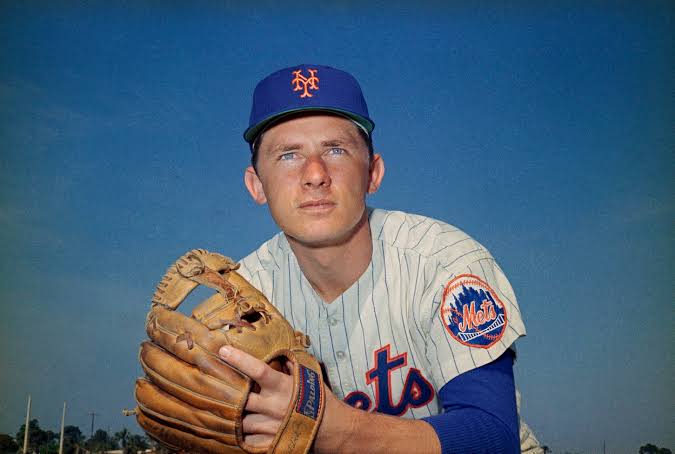Scroll Down to Read Today’s Essay
Subscribe to Baseball History Comes Alive for automatic updates. As a Free Bonus, you’ll get instant access to my Special Report: Gary’s Handy Dandy World Series Reference Guide!
Today Vince Jankoski shares with us a fitting tribute to recently deceased Bud Harrelson with an analysis of his career. Vince addresses the question of how the light-hitting Harrelson (.236 career average) could have survived for 16 seasons in the major leagues. I think you’ll find Vince’s analysis interesting. -GL
Bud Harrelson, RIP
Upon learning of the passing of Bud Harrelson on January 10 of this year of complications from Alzheimer’s disease, I sought to discover how the light-hitting Harrelson could have such a long major league career. Harrelson played 1,533 games over 16 seasons mostly with the New York Mets. He was (more or less) the Mets regular shortstop for ten of those seasons. The Mets were a competitive team during that span, appearing in two World Series.
Harrelson’s longevity cannot be attributed to his bat. In 5,516 plate appearances, Harrelson hit .236 with a slugging average of .288. He hit seven home runs, never more than one in any season. To put this last number in perspective, his teammate, pitcher Tom Seaver, hit 12 home runs in 1,552 career plate appearances. In the 1972 season, Seaver out-homered Harrelson 3 to 1, despite having 400 fewer plate appearances.
I expected to find that Harrelson had outstanding defensive numbers, but I was disappointed. Harrelson’s defensive numbers (fielding average, range factor, and double plays turned) were very good, but not superior. He won a gold glove in 1971 but lost out in other seasons to Gene Alley, Dal Maxvill, Don Kessinger, Larry Bowa, and Roger Metzger. Harrelson was no Ozzie Smith. Certainly, Harrelson did not win a spot in the starting lineup based on his pugilistic abilities. He lost his only fight to the pugnacious Pete Rose in Game Three of the 1973 NLCS.
Harrelson has been characterized as “feisty” and “scrappy,” however, being “feisty” and/or “scrappy” can only get one so far in the major leagues. Calling a player “feisty” or “scrappy” is damning with faint praise. Ty Cobb was “feisty” and “scrappy”, but that is not what you hear when people discuss Ty Cobb. Likewise, Pete Rose.
One notable thing about Harrelson is that he walked an inordinate amount of times for such a weak hitter. In the 1969 world championship season, he was third on his team in bases on balls, trailing only .340 hitter Cleon Jones and slugger Tommy Agee. In fact, Harrelson’s walk per plate appearance (11.8%) was higher than both Jones (11.5%) and Agee (9.3%) in that season. In the 1973 pennant-winning season, Harrelson was second on the team in walks to Wayne Garrett. For his career, Harrelson walked 11.5% of the time. By comparison, contemporary power hitters and Hall of Famers Willie Stargell (10.4%), Carlton Fisk (8.6%), and Hank Aaron (10%) walked far fewer times than Harrelson.
One could argue that, as a weak hitter, Harrelson would bat eighth in the line-up. The pitcher would follow, allowing the opposing pitcher to pitch around Harrelson. However, Harrelson did not always bat in the eighth slot. In the championship season of 1969, the Mets platooned Ken Boswell and Al Weis at second base. When Boswell played, Harrelson, a switch hitter, would bat eighth. If Weis was in the line-up, he batted eighth with Harrelson moving up to the number two position. For example in the World Series that year Harrelson batted second in games one, two, four, and five against left-handers Mike Cuellar and Dave McNally. Weis batted eighth. In game two, Boswell started against right-hander Jim Palmer. Harrelson batted eighth. So, Harrelson’s inordinate number of walks is not attributable solely to his batting down in the order.
I conclude that Harrelson’s longevity must be a result of his baseball smarts. Although I don’t like to rely on anecdotal evidence, I admit that I watched him play a lot and never saw him make a mental mistake. He was one of those players who, while he would not transform a bad team into a good one or even boost his team up a few notches in the standings, on a contending team he could make the difference between making the playoffs and spending October on the couch. May he RIP.
Vince Jankoski
Subscribe to our website, Baseball History Comes Alive with over 1400 fully categorized baseball essays and photo galleries, now surpassing the one million hits mark with 1,147,000 hits and over 950 subscribers

